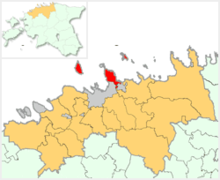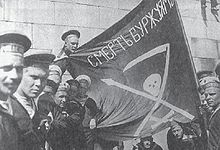Naissaar
It is located in the Gulf of Finland, northwest of the capital city Tallinn, and is administratively part of Viimsi Parish.
After the Second World War, the settlement on the entire island were combined into a single village called Naissaare.
Also being restored is a narrow gauge railway that runs from the north to the southern tip of the island.
Estonian Swedish fishermen were well established on the island by the 15th century, and the Swedes erected a small fortress there in 1705 during the Great Northern War.
11 June] 1808, when the 14-gun Russian cutter Opyt fought unsuccessfully against the British 44-gun frigate HMS Salsette.
In the early twentieth century, Russia began modernizing its fortifications in the Gulf of Finland.
A local Council of Workers and Soldiers' Ambassadors convened on Naissaar, declaring the local People's Commissar Council on 17 December, which included the Commissioner for War, Home Affairs, Labor, Finance and Health; they were later joined by an Education Commissioner.
[4] The Council began drafting a constitution, the capital was designated the Southern Village and the anthem "The Internationale".
[3] The Soviet Republic of Naissaar was also recognized, at least de facto, by the workers' government in mainland Estonia, who sent prisoners to the island "to fortify some of the castles, clear the railroads, carry snow and dig sand.
"[4] At this point the newly formed Estonian Provisional Government appealed to the German army for assistance.
However, after German forces occupied the island on 26 February 1918, the Baltic fleet evacuated most of its population, moving towards Helsinki and then to Kronstadt.
When the Soviets left Naissaar in early 1993, they burned the explosives in the naval mines, leaving a multitude of metal casings scattered throughout the island.
Another legacy of the arms industry is that the soil of the island remains contaminated by oil and heavy metals.






